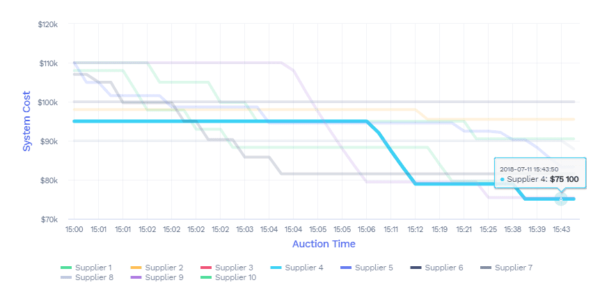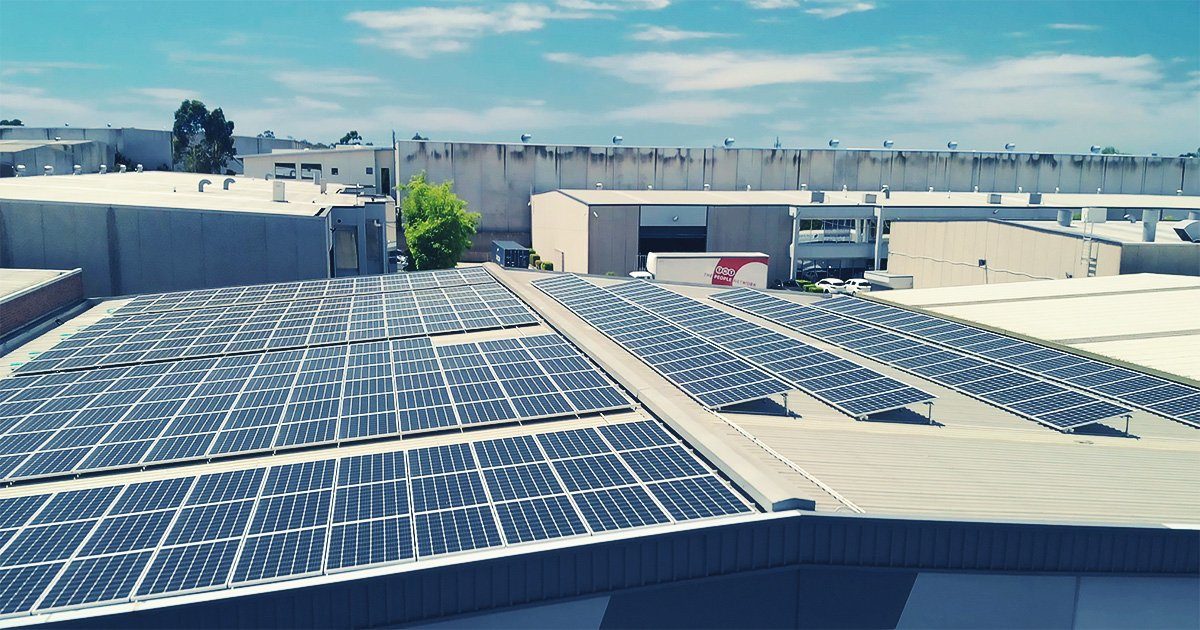Energy Action, an energy-procurement business serving the commercial sector throughout Australia, is leveraging 20 years of experience and a new partnership with Beam Energy Labs’ competitive solar procurement platform, to provide a variety of contractual options for commercial enterprises with as yet naked roofs to put on the PV. Its Energy Action Solar Auction will give businesses access to outright purchase, third-party finance, leasing or power purchase agreements for solar installed on their rooftops or elsewhere on the premises (think vacant land or above car parks).
Over the past two decades, ASX-listed Energy Action has focused on providing its commercial clients who typically burn through $25,000 or more in energy per annum with the cheapest, most suitable electricity contracts via an online reverse-auction platform known as Australian Energy Exchange. The renewable component of their energy was typically very low, being dependent on the mix provided by their chosen supplier and only occasionally including a rooftop solar component.
When Energy Action recently surveyed its several-thousand-strong database about their net-zero intentions, it found that while 80% of its clients and potential clients agreed that they need to take action on climate change, only 24% had adopted net zero as part of their corporate strategy.
“We can already see that changing, and it’s likely to underpin the need for renewables solutions in the future,” said Energy Action CEO, John Huggart.
Huggart told pv magazine that the commercial rooftop-solar sector had recently reached a new stage of maturity, and that challenges such as tenant-landlord tensions over costs and benefits have been largely overcome.
“I think the process that we’ve developed here has helped manage several issues for clients, such that we can now commoditise the actual procurement decision,” he said.
Integrated technologies better serve the market
An exclusive white-label agreement with Beam Solar allows Energy Action to streamline the process from end to end via an online portal: customers submit a recent electricity bill and energy data, and the system uses aerial imaging technology to model their optimal onsite solar installation. A panel of up to 15 approved and qualified suppliers — including Infinite Energy, Smart Commercial Solar, Solgen and Gemenergy — is then invited to bid for the supply and installation of the system, and ultimately clients can select their preferred contractual arrangement.

Image: Energy Action
The system “will enable clients to model hundreds of rooftop solar arrangements in seconds, solicit and evaluate offers from system suppliers and negotiate and agree contracts”, said Energy Action Chief Technology Officer, Clint Irving in a statement.
Huggart told pv magazine, “In our current environment, irrespective of the merit of return on investment, not every organisation has access to the capital to install solar themselves.”
Energy Action Solar Auction’s contract options, “give flexibility to the client to achieve the solar outcomes of reduced energy bills as well as contributing to their net-zero ambitions”, he said.
Commercial enterprises continue the solar boom
Industry pundits such as the Clean Energy Council and SunWiz Director, solar analyst Warwick Johnston, have called out commercial as the fastest-growing segment of the Australian solar market.
The CEC says the medium-scale solar sector (100 kW to 5 MW) added 162 MW of new capacity in 2019, largely due to shopping centres, hospitals, schools and commercial buildings “taking back control of their rising electricity costs and increasing their focus on sustainability”.
At the end of August this year, SunWiz reported a 41% increase for rooftop solar (both residential and commercial) installations over the same period in 2019, which Johnston said was fuelled by an increase in the 10-30 kW-capacity bracket.
Solar options for commercial enterprises are diversifying
Another recent entrant to the commercial/industrial solar market, Epho Commercial Solar, builds, owns and maintains solar installations on rooftops leased from landlords, and supplies electricity to both tenants and to the grid. Its Bright Thinkers Power Stations (BTPS) show enormous potential for utilising real estate close to existing transmission for “urban solar farms” that contribute clean energy to city demand as coal-fired power stations exit the system.
The choice for commercial enterprises on a path to net zero is growing through innovations such as BTPS, and the practical integration of technologies by Energy Action.
Huggart, who over the past 20 years has held managerial positions at AGL, Origin Energy, Alinta and at new-tech start-up Pooled Energy, says he has observed businesses reach a tipping point of urgency to address climate change since last summer’s devastating bushfire season.

Image: Energy Action
It was another contributor to the company “stepping in to help our clients achieve net zero”, he says. “Obviously, procurement of solar on site is an important part of achieving that goal,” he adds.
Energy Action has published its own net-zero plan, which includes its current displacement of the electricity it uses at each of its premises throughout Australia with certified renewable energy contracts supplied by 100% GreenPower.
Huggart said it made sense for the company to leverage its client relationships and understanding of clients’ energy data and needs, to help them achieve a transition to renewables, and added that the company intends to include battery storage in its offerings when that technology reaches a clearer value proposition.
“Many warranties and battery life spans are still around the 10-year mark, and often the economics” of return on investment “are close to that point as well, so it’s not yet jumping off the page”, he says.
In the meantime, PPAs have emerged as a compelling commercial structure to enable the capture of value from standalone rooftop solar.
Huggart says, “PPAs acknowledge that this is a long-term asset: Let’s share the value with a lower cost of energy for the tenant today; and let’s create an asset that provides value to the landlord in attracting future tenants with the benefit of those low bills.”
This content is protected by copyright and may not be reused. If you want to cooperate with us and would like to reuse some of our content, please contact: editors@pv-magazine.com.









3 comments
By submitting this form you agree to pv magazine using your data for the purposes of publishing your comment.
Your personal data will only be disclosed or otherwise transmitted to third parties for the purposes of spam filtering or if this is necessary for technical maintenance of the website. Any other transfer to third parties will not take place unless this is justified on the basis of applicable data protection regulations or if pv magazine is legally obliged to do so.
You may revoke this consent at any time with effect for the future, in which case your personal data will be deleted immediately. Otherwise, your data will be deleted if pv magazine has processed your request or the purpose of data storage is fulfilled.
Further information on data privacy can be found in our Data Protection Policy.